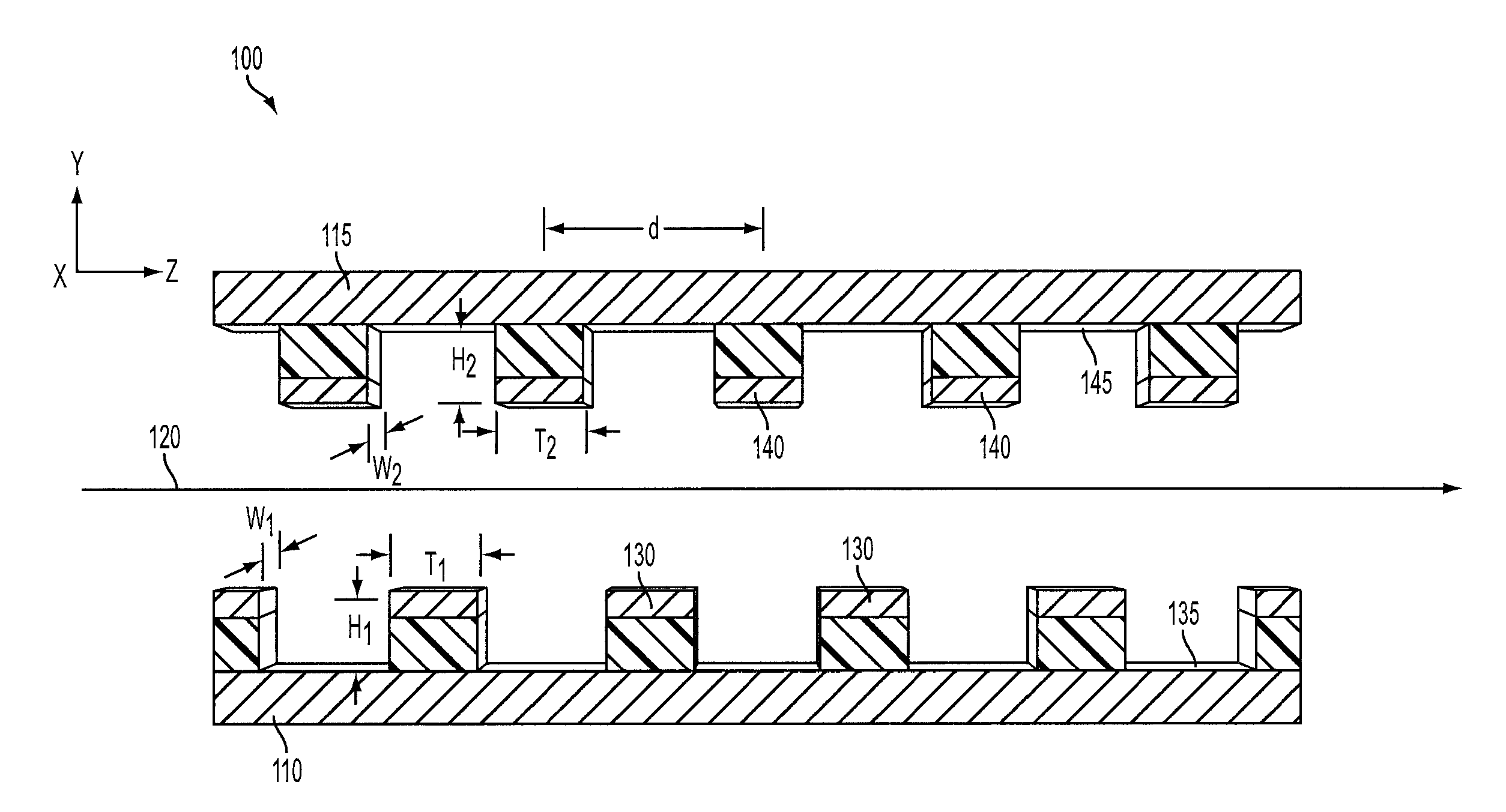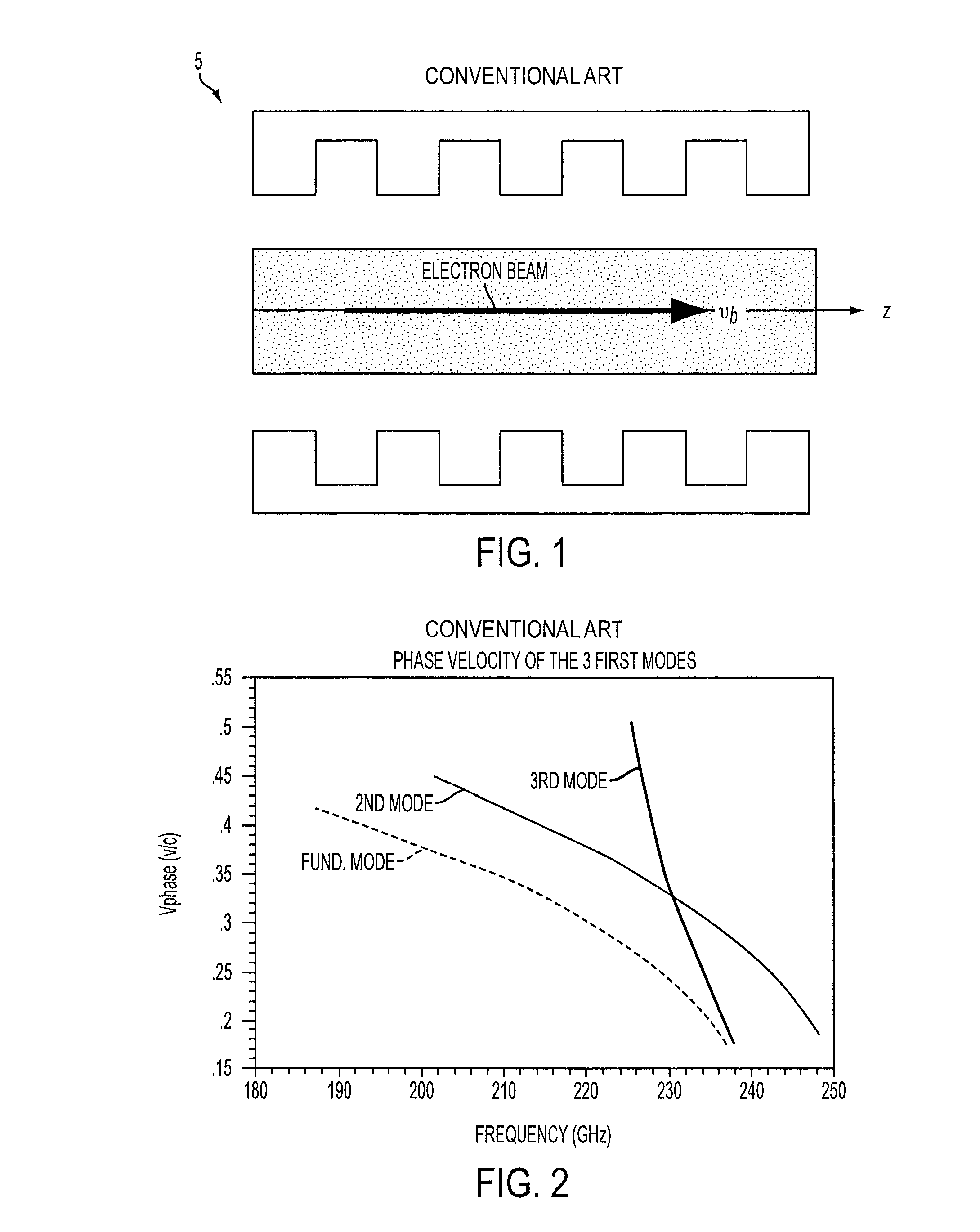Slow wave structure having offset projections comprised of a metal-dielectric composite stack
a slow wave and composite stack technology, applied in the direction of transit-time effect amplifiers, traveling-wave tubes, coupling devices of transit-tubes, etc., can solve the problems of limiting amplifier power and bandwidth, and conventional wide-band slow wave structures (sws) for amplifying rf waves are not suitable for electron sheet beam configurations
- Summary
- Abstract
- Description
- Claims
- Application Information
AI Technical Summary
Benefits of technology
Problems solved by technology
Method used
Image
Examples
Embodiment Construction
[0022]FIG. 1 is a cross-section side view of a high frequency electron sheet beam SWS in the form of a double metallic aligned vane structure 5, also referred to in the art as a Smith-Purcell structure. FIG. 1 shows an electron beam traveling through a Smith-Purcell structure along an axis z. The electron beam travels through the Smith-Purcell structure at a velocity vb. One drawback of the Smith-Purcell structure 5 is that its fundamental mode is a backward wave mode which may drive an amplifier using this structure into oscillations. Additionally, the axial electric field of the fundamental mode is anti-symmetric in the vertical direction, thus disrupting the electron sheet beam to an extent. Moreover, amplifiers using the Smith-Purcell structure 5 must operate at a relatively high voltage (i.e., high phase velocity) and at a relatively narrow bandwidth due to circuit dispersion. FIG. 2 illustrates a phase velocity {VPhase (v / c)} vs. frequency, in GHz, characteristic of the first ...
PUM
 Login to View More
Login to View More Abstract
Description
Claims
Application Information
 Login to View More
Login to View More - R&D
- Intellectual Property
- Life Sciences
- Materials
- Tech Scout
- Unparalleled Data Quality
- Higher Quality Content
- 60% Fewer Hallucinations
Browse by: Latest US Patents, China's latest patents, Technical Efficacy Thesaurus, Application Domain, Technology Topic, Popular Technical Reports.
© 2025 PatSnap. All rights reserved.Legal|Privacy policy|Modern Slavery Act Transparency Statement|Sitemap|About US| Contact US: help@patsnap.com



